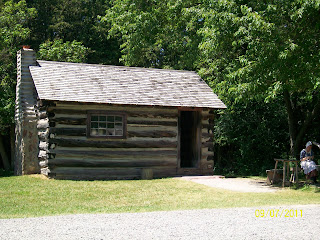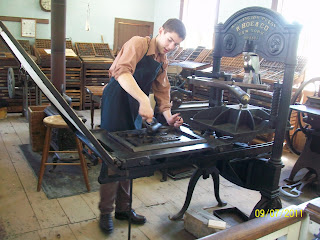LANG PIONEER VILLAGE - KEENEE, ONTARIO
Lang Pioneer Village Museum was established by the County of Peterborough in 1967 to celebrate and preserve the rural history of the area.
Milbourn House - restaured to 1870's
Hastie Carpenter Shop
Tinsmith Shop
Fitzpatrick House, restaured to the 1840's
Fife Cabin - settler's first home, restaured to 1820's
Register Print Shop - with original equipent from the "Norwood Register"
Keene Hotel - 1870's accomodations
(25cents room)
This tin bathtub would be filled by hand. A person would sit on the wide rim of the tub to bathe
Ash House - stored ashes to make soap
Menie General Store (and Post Office)
Blacksmith Shop
This watering trough was originally owned by Campbell’s Dairy in Peterborough. It provided a stop for the milk wagon horses to obtain a drink before proceeding on with their routes
Glen Alda Methodist Church (1898)
Douro Town Hall - restaured to 1897
South Lake School - A 1-room for grades 1 - 8
Cheese Factory
Cider Barn
Smoke house - used to smoke meat
Ice House - ice stored in sawdust - served as a refrigerator
Agriculture barn
This stump/stone puller was build in the early 1850's was used to remove large stones
Laundry
(A few of 322 pictures)

































































Nestled along the banks of the historic Indian River, Lang Pioneer Village Museum features over twenty-five restored and furnished buildings constructed between 1825 and 1899. Many of the buildings were donated by townships within the County of Peterborough and moved to their present site when the Museum was founded.
ReplyDeleteThe Village is the site of David Fife's 1820's log cabin. Fife, who at the age of 15 emigrated from Scotland to Canada, was one of the first farmers who realized that the European strains of wheat were not suited to the Canadian climate. He wrote to a friend back home for new seed samples and began a horticultural experiment which led to the discovery of Red Fife wheat in 1842. It soon became popular in southern Ontario and the northern United States because of its high yields and excellent bread making qualities. By 1870, Red Fife was well-established on the Canadian Prairies and during the next thirty years it was regarded as the best variety of spring wheat. Red Fife wheat was ground into flour at the three-storey Lang Grist Mill. The limestone for the walls of this impressive structure came from the Indian River. Originally built in 1846, visitors can still see wheat ground into whole wheat flour throughout the summer. David Fife was posthumously inducted into the Canadian Agricultural Hall of Fame in 1963 for his discovery of Red Fife wheat.
http://www.langpioneervillage.ca/about.php